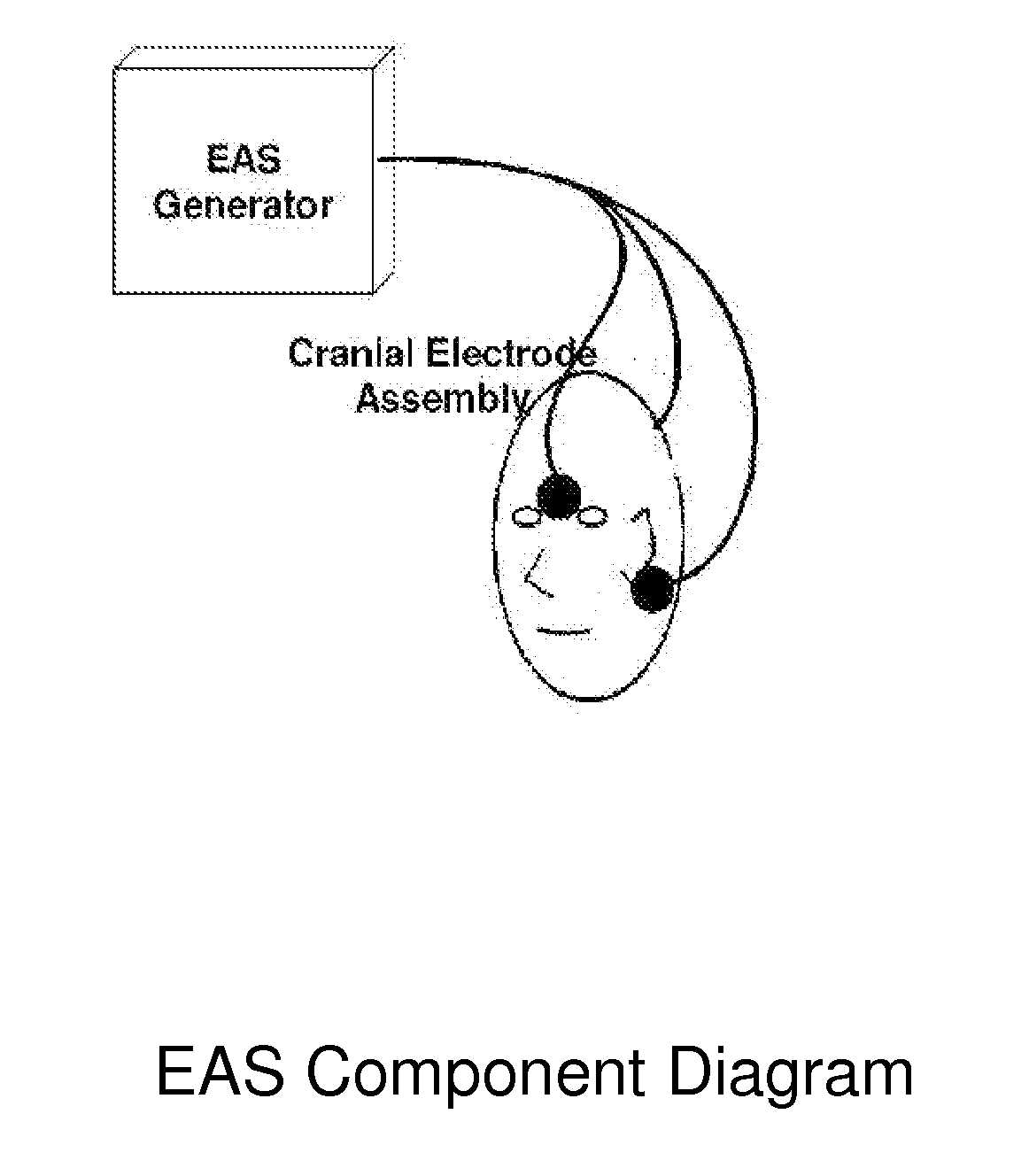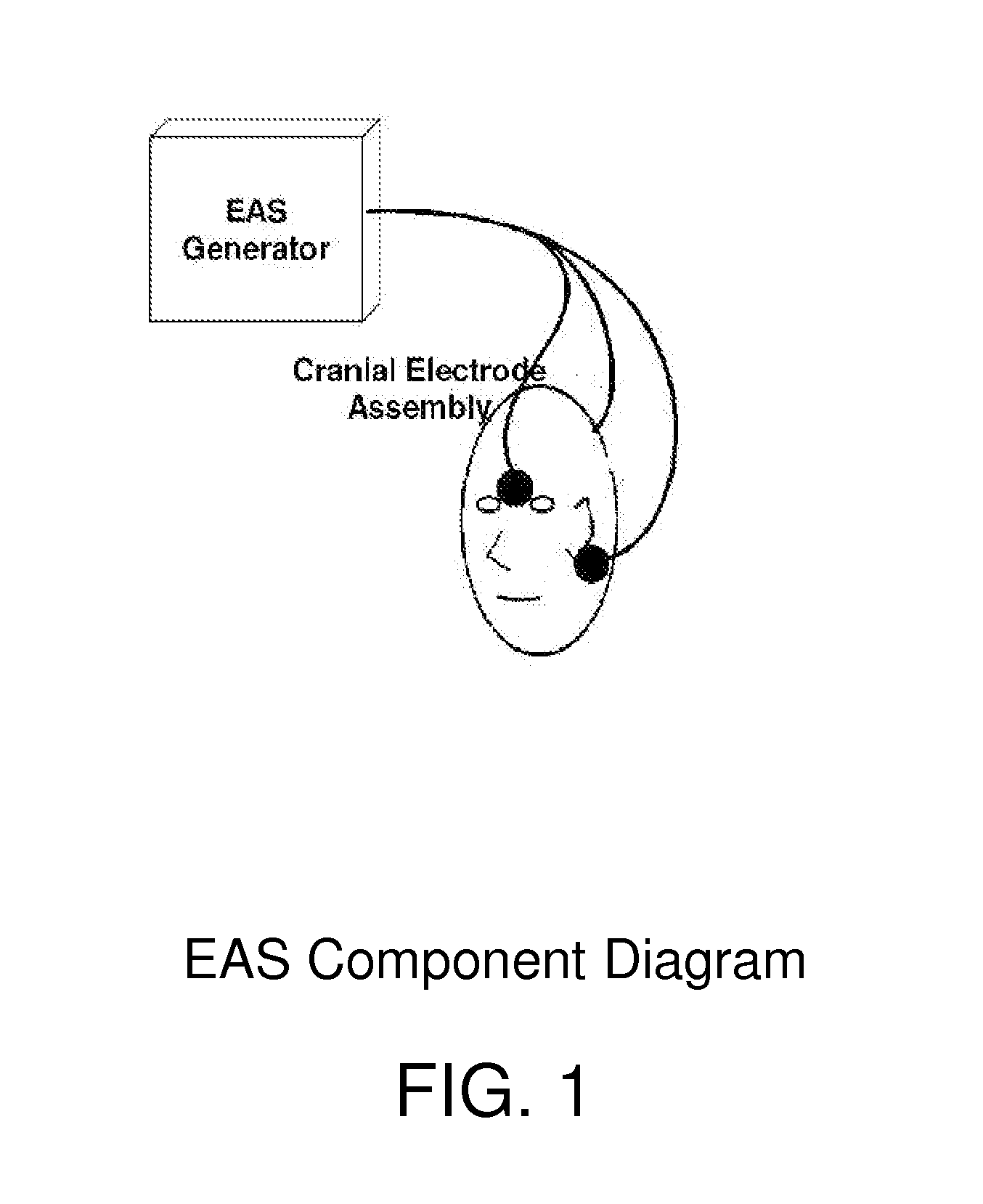Passive monitoring of bioelectical signals and active electrical anesthesia stimulation
a technology of active electrical anesthesia and bioelectical signals, which is applied in the field of passive monitoring of bioelectical signals and active electrical anesthesia stimulation, can solve the problems of stigmatizing serious electronic technology and research, incompatible systems, and virtually ignored medical community, so as to reduce the requirements for anesthetic agents, enhance the practice of anesthetics, and achieve the effect of reducing the requirement of anesthetic agents
- Summary
- Abstract
- Description
- Claims
- Application Information
AI Technical Summary
Benefits of technology
Problems solved by technology
Method used
Image
Examples
Embodiment Construction
Description of the Invention
Issues Addressed by the Invention
[0049]Issue 1: Objectivity, Specificity, and Precision in Anesthesia Assessment.
[0050]Conventional anesthesia practices require anesthesiologists to interpret relatively crude and indirect physiological variables, such as heart rate and systolic blood pressure, to assess a patient's neurological state. This does not facilitate the most accurate assessments of the level of anesthesia for determining the requirements for pharmacological agents needed to maintain a desired neurological state.
[0051]The specificity and precision of subjective variables and metrics used for anesthesia administration has direct significance on patient safety and well-being. Given that TCES enhances or extends the effects of anesthetic drugs and inhalants by 25% or more, the conventional practices and procedures for assessing and maintaining anesthesia may no longer suffice. Better tools for clinicians to determine the proper quantity of anestheti...
PUM
 Login to view more
Login to view more Abstract
Description
Claims
Application Information
 Login to view more
Login to view more - R&D Engineer
- R&D Manager
- IP Professional
- Industry Leading Data Capabilities
- Powerful AI technology
- Patent DNA Extraction
Browse by: Latest US Patents, China's latest patents, Technical Efficacy Thesaurus, Application Domain, Technology Topic.
© 2024 PatSnap. All rights reserved.Legal|Privacy policy|Modern Slavery Act Transparency Statement|Sitemap



